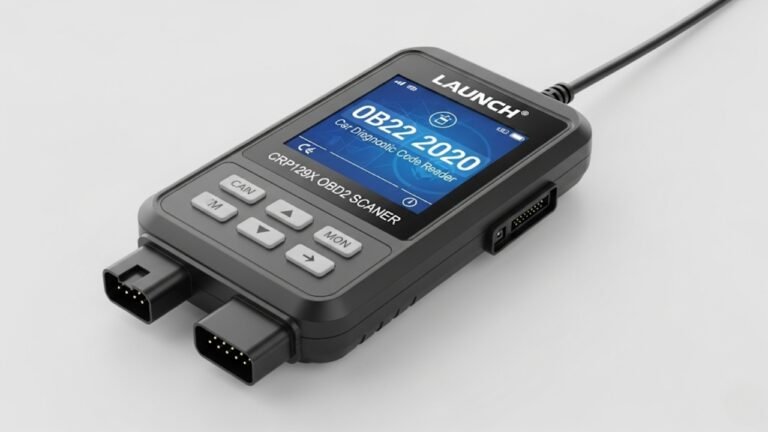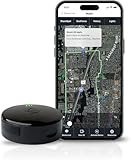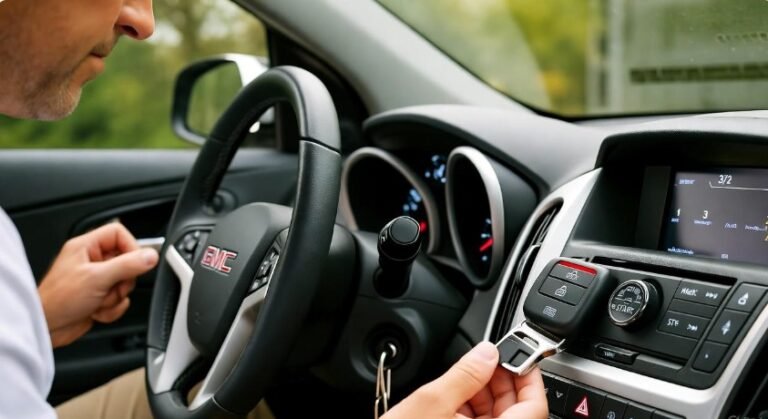How to Take Apart Buick Key Fob: Expert Disassembly Tips for Every Owner
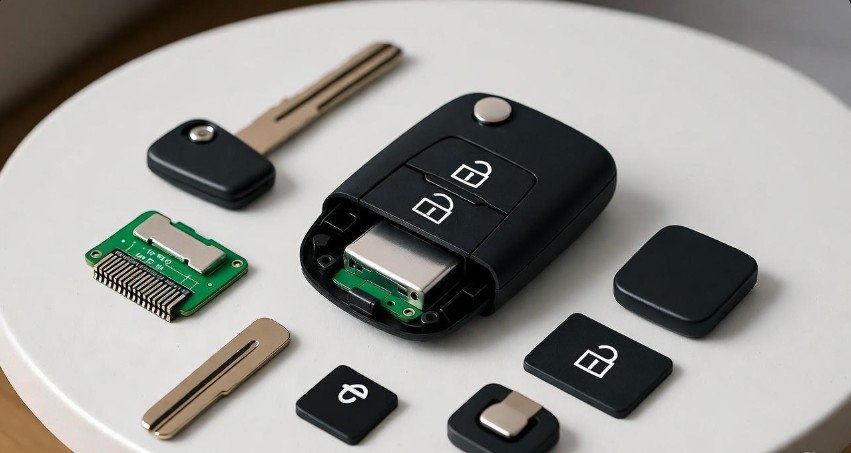
If you’ve ever used a Buick key fob, you already know how convenient it makes your daily driving routine. From unlocking your car doors with a single press to starting the engine without touching a key — it feels like a small piece of modern magic in your pocket. But when that magic suddenly stops working, frustration sets in fast. Whether it’s a dead battery, a sticky button, or a malfunctioning circuit board, sometimes you just need to take apart your Buick key fob and see what’s going on inside.
Now, don’t worry — this isn’t as complicated as it sounds. With a few household tools, some patience, and a clear understanding of what’s inside your fob, you can open it safely without damaging anything. Think of it like peeling an orange — gentle, careful, and methodical. In this detailed guide, we’ll walk you through the entire process, from identifying the seam to reassembling the unit. By the end, you’ll know exactly how to disassemble a Buick key fob and handle common problems like a pro.
Understanding the Buick Key Fob: A Smart Device in Disguise
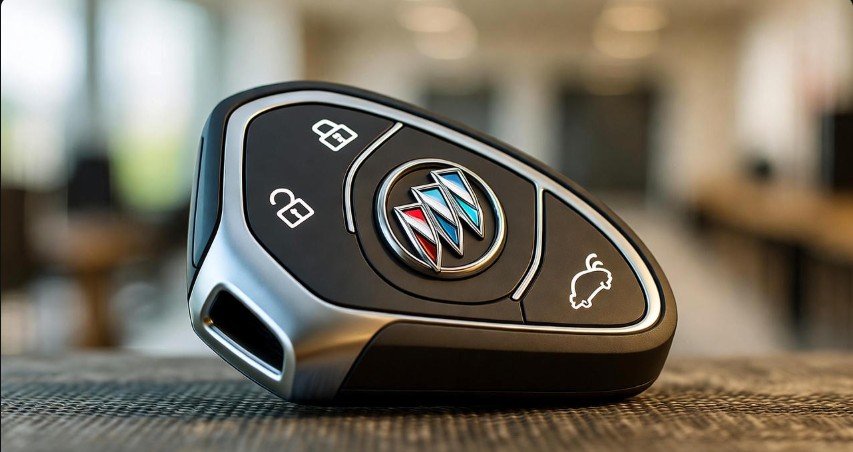
Before grabbing your screwdriver, it helps to understand what your Buick key fob actually does. At its core, it’s a compact wireless transmitter that communicates with your car’s onboard receiver. When you press a button, the fob sends a signal using a unique code that your vehicle recognizes. This code unlocks doors, opens the trunk, or even starts the engine.
Inside, the key fob houses several components:
-
A small lithium battery (usually CR2032) that powers the device.
-
A circuit board that handles signal transmission.
-
A rubber or plastic keypad with embedded buttons.
-
A transponder chip for vehicle security (in smart key versions).
All these pieces work together seamlessly — until one fails. When that happens, opening the fob gives you direct access to inspect or replace the faulty part. The good news is that Buick has designed its key fobs to be user-serviceable, meaning with the right care, you can fix small issues yourself without visiting a dealership.
Step 1: Gather the Tools You’ll Need
Like any small repair, success starts with preparation. Taking apart a Buick key fob doesn’t require a toolbox full of fancy gear — just a few essentials:
-
Small flathead screwdriver – ideal for prying open the case.
-
Plastic prying tool – preferred for minimizing scratches.
-
Soft cloth or towel – to protect your work surface.
-
Tweezers – to handle small internal parts like springs or contacts.
Here’s a quick table to help you keep things organized:
| Tool | Purpose | Recommendation |
|---|---|---|
| Flathead Screwdriver | Opens the seam | Use gently to avoid damage |
| Plastic Pry Tool | Prevents scratches | Ideal for new fobs |
| Tweezers | Removes small parts | Helpful for battery and chip |
| Microfiber Cloth | Surface protection | Keeps dust away |
Pro tip: Always work on a flat surface with good lighting. If your fob slips from your hand, tiny components could scatter — and they’re often harder to find than you’d expect!
Step 2: Locate the Seam — The Gateway Inside
Every Buick key fob has a seam or joint where the two halves of the casing meet. This seam is your entry point. Run your finger around the edges of the fob — you’ll feel a slight indentation or line running across the middle. That’s where the top and bottom shells are joined together.
If your key fob has a visible key blade release button, remove the physical key first. This gives you better access to the seam and prevents any accidental damage to the locking mechanism. Once the key is out, look for a small notch — that’s often where the casing can be gently pried open.
Here’s something many car owners overlook: different Buick models have slightly different fob designs. For instance, an Enclave key fob might open differently than a Regal or Encore fob. So, before applying pressure, take a close look at your specific model. The key is to be gentle and observant.
Step 3: Start Prying — Slowly and Steadily
Once you’ve located the seam, it’s time for the careful part. Insert your plastic prying tool (or a small flathead screwdriver if you don’t have one) into the groove. Apply a gentle twisting motion — not force. You’ll hear a faint pop as the clips begin to release. That’s your signal to move around the perimeter.
Think of it like unzipping a tight jacket — one corner at a time. Work your way around slowly, feeling for spots where the case resists. If you force it open too quickly, you could crack the casing or dislodge a delicate internal component.
It helps to keep the flat side of your tool flush against the seam, avoiding deep insertion that could scratch or bend the circuit board inside. Once you feel both halves start to separate, stop prying and gently pull the two parts apart with your fingers.
Step 4: Examine and Remove the Internal Components
With the shell open, you’ll now see the heart of your Buick key fob — its internal components. This part can feel intimidating, but don’t worry. Everything inside is laid out logically. You’ll typically see the battery, the circuit board, and the button pad all neatly fitted in place.
Carefully lift the circuit board with your fingers or a pair of tweezers. Underneath, you’ll likely find the battery held in place by a small metal clip. Note how the battery is oriented — positive (+) and negative (-) sides matter. Take a picture with your phone if you’re worried about forgetting.
While the fob is open, check for:
-
Corrosion or moisture damage near the battery terminals.
-
Dust or debris stuck around the buttons.
-
Cracks or worn areas on the rubber pad.
Cleaning these small issues can make your fob feel brand new again. Use a dry cloth or cotton swab to wipe surfaces gently. Avoid liquids — especially alcohol or water — as they can damage electronic components.
Step 5: Replace or Maintain the Components
Now that you’ve disassembled the fob, it’s time to address the issue that led you here. Most often, you’ll be replacing the battery, which tends to last about 2–3 years depending on usage. Buick key fobs typically use CR2032 lithium batteries, though some models may use CR2025. Always double-check the engraving on the old battery before buying a replacement.
Slide the new battery into place, ensuring it matches the same orientation as before. You’ll feel a light click when it’s seated correctly. If your issue wasn’t power-related, you can inspect other parts:
-
If the buttons are sticky, gently clean them with a dry cotton swab.
-
If the circuit board looks worn, consider replacing it (dealerships or locksmiths can help).
-
If the outer shell is cracked, you can order a replacement case online and reuse your internal components.
Once the maintenance is done, it’s time to bring your fob back together. But before you snap it shut, take a moment to double-check that all components are aligned properly and nothing is loose.
Step 6: Reassemble the Buick Key Fob
Reassembly is the easy part — but precision matters. Start by placing the circuit board and battery back into their original positions. Make sure the contacts align correctly, especially where the battery touches the metal terminals. Then, carefully align the two halves of the casing and press them together.
You should hear a faint “click” or “snap” as the clips lock back into place. Run your fingers around the edges to ensure the casing is sealed evenly all around. Reinsert the physical key (if removed) and test all buttons — lock, unlock, and panic — to make sure everything functions properly.
If the fob doesn’t respond, try flipping the battery or pressing the buttons a few times to ensure proper contact. In rare cases, you might need to reprogram your Buick key fob, especially if the battery was removed for a long time. Consult your vehicle’s owner manual or visit a certified technician for assistance.
Common Mistakes to Avoid During Disassembly
When you take apart a Buick key fob, it’s easy to make small mistakes that cause unnecessary stress. Here are a few to watch out for:
-
Using too much force: Gentle pressure is all you need. Forcing it open can snap the clips.
-
Skipping the visual inspection: A dirty contact or corroded battery terminal can mimic a dead fob.
-
Forgetting battery orientation: Always note which side faces up before removal.
-
Mixing up components: Keep parts organized to make reassembly easier.
These may seem minor, but they make all the difference between a quick fix and a frustrating mistake.
Expert Troubleshooting Tips for Buick Key Fobs
Now that you’ve learned how to take apart your Buick key fob, let’s talk about what to do if it still doesn’t work after reassembly. Sometimes, replacing the battery or cleaning the inside isn’t enough to fix deeper issues. Don’t worry — it doesn’t always mean you need a new fob. With some expert-level troubleshooting, you can pinpoint what’s really going wrong.
Start by checking signal strength. Stand near your Buick and press the unlock button. If the lights flash or doors click but don’t unlock, the signal might be weak. This can happen if the battery isn’t seated correctly or if corrosion on the terminals is interrupting power. Remove the battery, clean the contacts gently, and reinsert it.
Next, inspect the circuit board for cracks or discoloration. Over time, heat, moisture, or impact can damage its surface. If you see a burnt area or broken connection, the board might need replacement.
Here’s a quick list to guide your troubleshooting:
-
Buttons not working? Clean or replace the rubber pad.
-
LED not lighting up? Battery or LED issue.
-
Range reduced? Weak signal or faulty circuit.
-
Fob completely dead? Possible transponder failure.
Sometimes, resetting your vehicle’s keyless entry system after reassembly can restore normal operation. You can do this by turning the ignition to “On,” pressing the lock and unlock buttons together for several seconds, and waiting for a beep or light confirmation (varies by model).
When to Replace Instead of Repair
Even the best devices have limits. If your Buick key fob continues to malfunction after battery replacement and cleaning, it may be time to consider getting a new one. Signs you might need a replacement include:
-
Visible water damage or corrosion on the circuit board.
-
Broken casing that won’t close properly.
-
Intermittent response, even with a new battery.
-
No signal detection even after reprogramming.
Buick dealerships and certified locksmiths can provide new key fobs, but prices vary depending on your vehicle’s model and year. Expect to pay anywhere from $80 to $300 for a replacement, including programming.
For budget-conscious owners, you can purchase an aftermarket key fob shell and reuse your existing electronic components. Just make sure the case matches your model exactly — even slight differences can prevent proper fitment.
Maintaining Your Buick Key Fob for the Long Run
Just like your car, your Buick key fob benefits from regular care. Small habits can extend its lifespan significantly. For example, avoid storing it in places exposed to high heat, like your dashboard. Excessive heat can shorten the battery’s life and weaken the casing.
Here are some maintenance tips:
-
Keep it dry: Moisture is the number-one enemy of electronics.
-
Change the battery annually: Even before it dies, to ensure consistent performance.
-
Clean regularly: Wipe the surface with a soft cloth every few months.
-
Avoid heavy impacts: Dropping your fob repeatedly can loosen internal components.
It’s also a good idea to carry a spare key fob battery in your glove compartment. That way, if your fob suddenly stops responding on a road trip, you can fix it instantly without visiting a store.
Different Types of Buick Key Fobs and Their Designs
Buick’s modern lineup includes various fob styles, each with its own internal design. Understanding yours helps you disassemble it correctly.
| Buick Model | Fob Type | Battery Type | Key Blade |
|---|---|---|---|
| Buick Encore | Smart Key (Push Start) | CR2032 | Hidden inside |
| Buick Enclave | Flip Key Fob | CR2032 | Folding key |
| Buick Regal | Remote Keyless Entry | CR2025 | Removable key |
| Buick LaCrosse | Proximity Key | CR2032 | Built-in |
While all share the same basic principles, smart key fobs tend to have more delicate circuit boards. Handle them carefully and avoid using metal tools to pry them open, as they can interfere with the transponder chip.
The Importance of Working Carefully and Safely
Disassembling a Buick key fob might seem simple, but it’s a task that rewards patience. Each step — from locating the seam to reassembling the halves — requires precision. Think of it as working on a tiny puzzle; every piece has its place.
Safety matters, too. Avoid short-circuiting the battery by keeping metal tools away from terminals. If you use a metal screwdriver, make sure it doesn’t bridge both sides of the battery contact at once. That small mistake can cause the battery to overheat or discharge instantly.
If you ever feel unsure, pause. Watch a short video tutorial or consult your owner’s manual for your Buick’s specific fob design. Sometimes, the simplest precaution saves you from expensive replacement costs.
A Real-Life Example: Fixing a Dead Buick Key Fob at Home
Let’s imagine this: you’re heading out on a cold Monday morning, coffee in one hand, key fob in the other. You press the unlock button — nothing. Panic sets in. But instead of rushing to the dealership, you remember reading how to take apart your Buick key fob.
You grab a small screwdriver, gently pop open the case, and replace the battery you picked up at the grocery store last week. A minute later, your car lights flash, doors unlock, and your stress melts away.
That’s the beauty of understanding your tools — confidence replaces anxiety. You don’t have to be a mechanic to handle these small but crucial fixes.
Advanced Tip: Cleaning Corrosion and Improving Contact Points
If you open your fob and notice a faint greenish or white powder near the battery contacts, that’s corrosion. It happens when moisture reacts with battery acid. Thankfully, you can clean it safely.
Here’s what to do:
-
Remove the battery immediately.
-
Dip a cotton swab in white vinegar and gently clean the affected area.
-
Dry thoroughly with a paper towel or air-dry for a few minutes.
-
Insert a new battery and test.
If corrosion is severe or extends to the circuit board, replacement might be your only option. But for mild cases, cleaning works wonders.
Frequently Asked Questions (FAQs)
1. How do I open a Buick key fob without damaging it?
Use a plastic prying tool to gently separate the halves along the seam. Avoid metal tools if possible to prevent scratches.
2. What type of battery does my Buick key fob use?
Most Buick key fobs use CR2032 batteries, though some older models use CR2025. Always check your old battery before buying a replacement.
3. Can I reprogram my Buick key fob at home?
Some models allow DIY programming using a sequence of ignition and button presses, but newer push-start models usually require professional programming.
4. My key fob still doesn’t work after replacing the battery — what now?
Check the battery orientation and clean the contacts. If the issue persists, your fob’s circuit board or transponder chip may be faulty.
5. Is it safe to use aftermarket key fob shells?
Yes, as long as they match your Buick model and year exactly. Transfer your internal components carefully to avoid damaging them.
6. How long does a Buick key fob battery last?
Typically 2–3 years, depending on usage and environmental conditions. Frequent use shortens battery life.
7. What should I do if I lose my Buick key fob?
Contact a Buick dealership or certified locksmith immediately. They can provide a replacement and deactivate the lost fob for security.
8. Can extreme weather affect my key fob’s performance?
Yes. Heat can shorten battery life, while cold may reduce responsiveness. Keep your fob at room temperature whenever possible.
Conclusion: Confidence in Your Hands
Taking apart a Buick key fob isn’t just about fixing a small gadget — it’s about gaining confidence in understanding your vehicle. What seems like a complicated electronic device is actually a simple, repairable tool once you know its structure.
With a few careful steps — locating the seam, prying open the case, replacing the battery, and reassembling it — you can keep your fob functioning for years. Remember, patience is key. Every careful motion ensures your fob stays intact and your Buick ready for every journey ahead.
So next time your key fob acts up, don’t panic. You now know how to take control, take apart your Buick key fob, and bring it back to life — all from the comfort of your own home.

